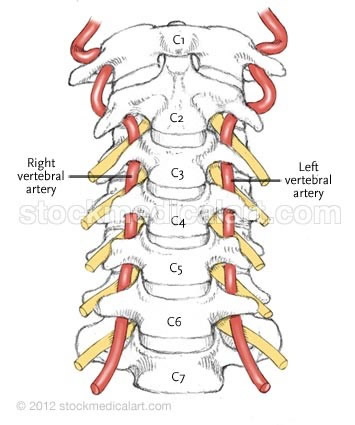
Lower back and neck pain are common conditions that can be improved with self-care. However, it’s occasionally necessary to treat them with high-velocity low-amplitude (HVLA) thrust techniques, better known as ‘adjusting’ the spine.
When clients speak to us about chiropractic care we commonly get asked two questions; “Are HVLA adjustments effective?” and “Could it damage my spine?”
We’ll start with the safety issue first. In the last few decades, numerous independent researchers and various government agencies have conducted studies into the efficacy, safety, appropriateness, and cost-effectiveness of chiropractic treatment. We will share some of this research evidence throughout this blog article.
The Risks of Spinal Adjustments
You may have heard people use the phrase “putting my spine back in place” or “manipulation of the spine.” You may even have heard chiropractors being called “bone crunchers” which is a slanderous term used by the medical community to discredit the chiropractic profession. However, we feel that the most accurate terminology would be “having the spine adjusted.”
Just so we are clear as to what we are discussing, the terms ‘manipulation’ and ‘adjustments’ can be used interchangeably. Both terms describe a high-velocity low amplitude (HVLA) thrust technique, which aims to correct vertebral subluxations.
Vertebral Subluxation is a term applied to a vertebra which has lost its normal position and/or motion in relation to the vertebrae above or below. Vertebrae, which are not functioning properly within the spinal framework, generate mechanical stress and can lead to ‘wear and tear’ within the spine as well as pain, inflammation, reduced spinal mobility and compromised function elsewhere within the body.
When an adjustment is performed there will often be an audible ‘pop’. The actual pop is called a cavitation, and it’s the release of gas that makes the popping sound. But certainly there is no bone-crunching that occurs and no risk to the joints or bones when performed by someone who is highly trained, such as chiropractors, osteopaths or physiotherapists.
So if there is no risk to the joints or bones, what are the risks?
 Most of the (risk) literature you will read on this subject relates to adjustment of the cervical spine (neck). And even more precisely a rotational adjustment of the neck.
Most of the (risk) literature you will read on this subject relates to adjustment of the cervical spine (neck). And even more precisely a rotational adjustment of the neck.
The concern relates to the vertebral arteries of the neck as they course through the transverse foramen (holes) within the vertebrae, making their way into the skull. See the diagram provided for reference. Vigorous rotation of the neck can “kink” this artery along its course. This may cause dissection of the artery, or the trauma may lead to the formation of a blood clot. Either of these episodes may cause ischemia to the brainstem (stroke).
It should be noted that spinal adjustment is not the only mechanism for this type of injury. Similar vascular accidents have been reported during activities such as yoga, swimming, prolonged overhead work, and during contact sports such as football, ice hockey, and rugby.
Spinal Adjustment Statistics

So what is the risk of suffering a stroke from cervical (neck) adjustment?
A complete review of the scientific literature was performed in a study of the risks of cervical adjustments. Every published study found that the estimated incidence of stroke from cervical adjustment is 1 to 3 incidents per million treatments.
The good news is that you’re more likely to be injured by soap (1 in 11,380), a hammock (1 in 85,350), a toothbrush (1 in 99,340), or a drinking straw (1 in 100,600).
To put this statistic (1-3 in a million) into perspective, cervical adjustments should be compared to other prominent treatment protocols for neck pain such as non-steroidal anti-inflammatory drugs (NSAIDS) and surgery.
NSAIDS
Ibuprofen – Nurofen, Advil and Bugesic
Diclofenac – Voltaren, Dinac and Fenac
Naproxen – Naprosyn, Naprogesic and Aleve
Celecoxib – Celebrex
The literature is clear; the use of NSAIDS for neck pain carries a hundred-times-greater risk of severe injury or death. The chance of you being hospitalized from the use of NSAIDS is 1 in 3,190, and the possibility of you dying from their use is 1 in 21,267.
As you can see from the literature, the risk associated with cervical adjustments is very minimal, especially when compared to other forms of treatment and other lifestyle factors.
Are HVLA adjustments effective?
 The research shows that chiropractic care is beneficial to patients on a case-by-case basis and based on the skills and acumen of the chiropractor themselves.
The research shows that chiropractic care is beneficial to patients on a case-by-case basis and based on the skills and acumen of the chiropractor themselves.
The Meade study found that chiropractic treatment was more effective than hospital outpatient management for patients with chronic or severe back pain.
The Florida Worker’s Compensation study reported that chiropractic care is more cost-effective than standard medical care in the management of work-related back injuries and that “a claimant with a back-related injury, when initially treated by a chiropractor versus a medical doctor, is less likely to become temporarily disabled, or if disabled, remains disabled for a shorter period of time; and claimants treated by medical doctors were hospitalized at a much higher rate than claimants treated by chiropractors.”
The RAND study concluded that spinal manipulations are beneficial to some patients with acute lower back pain and is an appropriate treatment for certain low-back conditions.3
The Utah study was published in the Journal of Occupational Medicine and found that patients of chiropractic care returned to work sooner after an injury and that chiropractic care was 10 times less expensive than standard medical care in compensation payouts.
The 1991 Koes’ clinical trial compared manipulative (chiropractic) and physiotherapy with standard medical care for the treatment of persistent back and neck complaints. After 12 months, the manipulative therapy groups showed greater improvement in the primary complaint as well as in physical function, with fewer visits.
The Manga report, funded by the Ontario Ministry of Health researched ways to reduce the incidence of work-related injuries and to address cost-effective ways to rehabilitate disabled and injured workers. The report overwhelmingly supported the efficacy, safety, scientific validity, and cost-effectiveness of chiropractic for low-back pain. Additionally, it found out that higher patient satisfaction levels were associated with chiropractic care than with medical treatment alternatives.
Conclusion
Avoiding back and neck pain requires people to maintain healthy habits and movement while checking all the boxes in relation to the Foundation Principles of health.
If there are significant dysfunctions present (pain and/or joint restrictions), they can be picked up on a whole-body assessment by one of the Effortless Superhuman practitioners.
It’s through our precise methodology that we have helped hundreds of clients overcome pain and return successfully to sport and activity.
To gain a further understanding of the Effortless Superhuman services we offer, book an appointment with a Effortless Superhuman ‘Pain and Dysfunction’ practitioner or give us a call on (08) 9388 2768 today.
